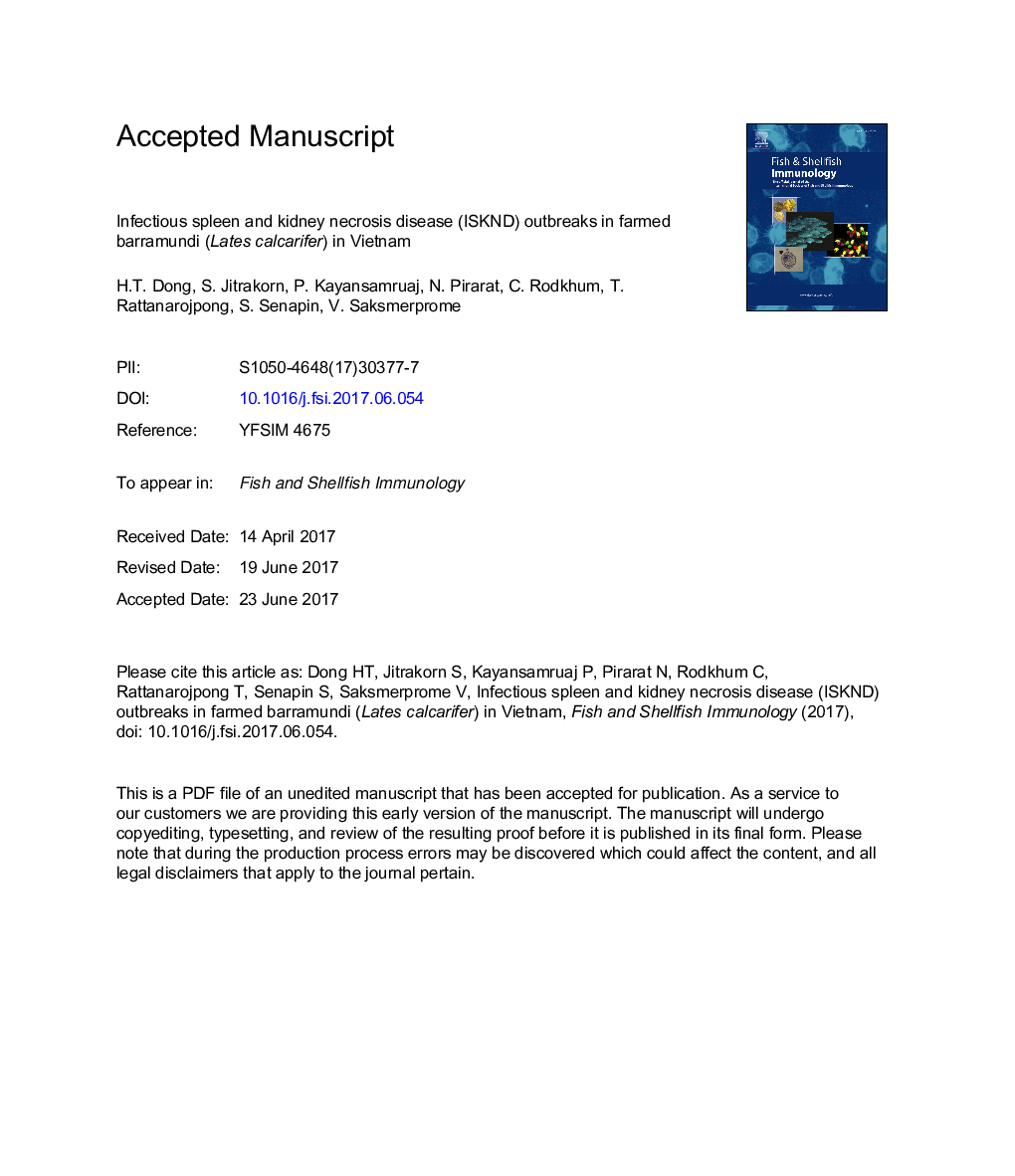| Article ID | Journal | Published Year | Pages | File Type |
|---|---|---|---|---|
| 5540377 | Fish & Shellfish Immunology | 2017 | 29 Pages |
Abstract
Emergence of a disease with clinical signs resembling megalocytivirus infection seriously affected large-scale barramundi farms in Vietnam in 2012-2014 with estimated losses reaching $435,810 per year. An oil-based, inactivated vaccine against red sea bream iridovirus (RSIV) was applied in one farm for disease prevention without analysis of the causative agent, and the farmer reported inadequate protection. Here we describe histological and molecular analysis of the diseased fish. PCR targeting the major capsid protein (MCP) of megalocytiviruses yielded an amplicon with high sequence identity to infectious spleen and kidney necrosis virus (ISKNV) genotype II previously reported from other marine fish but not barramundi. Detection of the virus was confirmed by positive in situ hybridization results with fish tissue lesions of the kidney, liver, pancreas, and brain of the PCR-positive samples. Based on the complete sequence of the MCP gene, the isolate showed 95.2% nucleotide sequence identity and 98.7% amino acid sequence identity (6 residue differences) with the MCP of RSIV. Prediction of antigenic determinants for MCP antigens indicated that the 6 residue differences would result in a significant difference in antigenicity of the two proteins. This was confirmed by automated homology modeling in which structure superimpositioning revealed several unique epitopes in the barramundi isolate. This probably accounted for the low efficiency of the RSIV vaccine when tested by the farmer.
Related Topics
Life Sciences
Agricultural and Biological Sciences
Aquatic Science
Authors
H.T. Dong, S. Jitrakorn, P. Kayansamruaj, N. Pirarat, C. Rodkhum, T. Rattanarojpong, S. Senapin, V. Saksmerprome,
